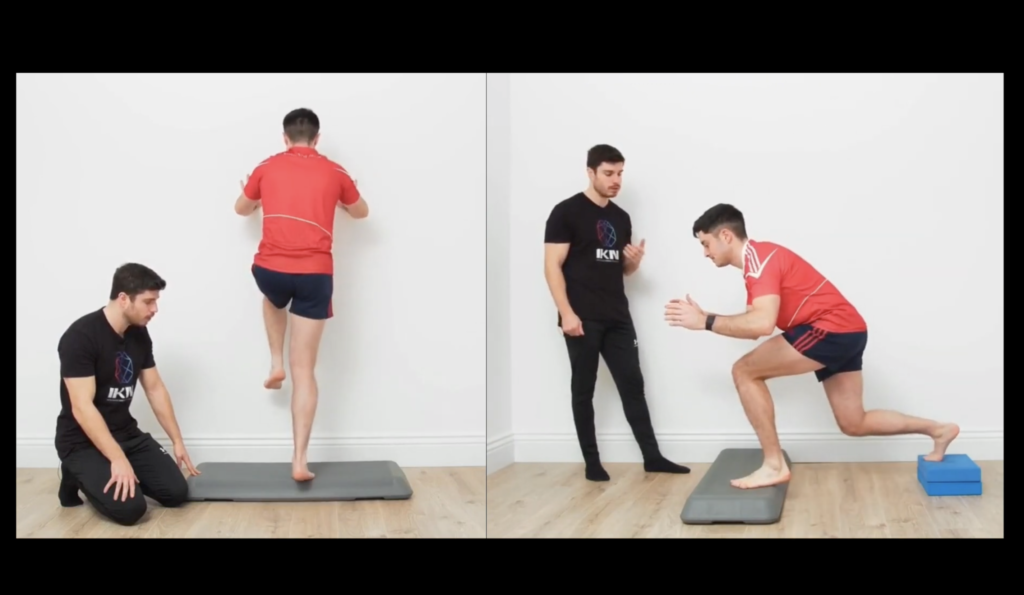
Distal vs Proximal Plyometric Strategies
Challenging the lower limb at faster speeds can offer us a clearer insight into the neuromechanical features of distal vs proximal tissues.
Both strategies in the video are challenging the speed of transition between eccentric and concentric phases, but secondary to the distinct features of distal and proximal tissues, one will express a faster transition relative to the other.
On the left in the video, there’s a greater distal challenge, and because the distal tissues express less muscle mass, more tendinous tissue, and other unique characteristics, the speed of transition is much faster.
On the right, the challenge is shifted proximally, but because of the greater muscle mass and lack of tendinous tissue, they are not as responsive as the distal structures. This is represented by a slower transition from ground contact to the concentric push onto the low surface.
There are many layers to these plyometric strategies when we view them through a neuromechanical lens, and if you want to explore these concepts further, then be sure to sign up to our new upper and lower limb plyometric webinars happening on March 12th (11am-1pm EST). It will be recorded if you cannot make it live. See you there!
Click HERE to Register!
